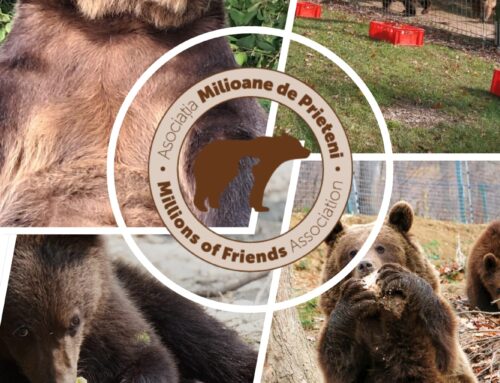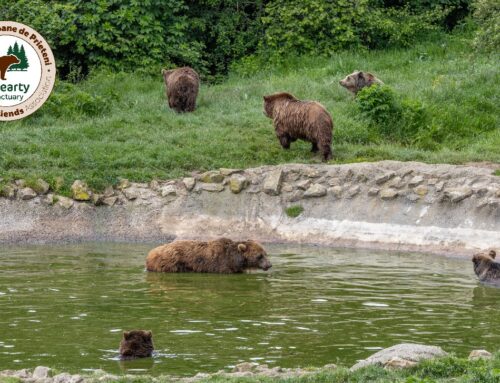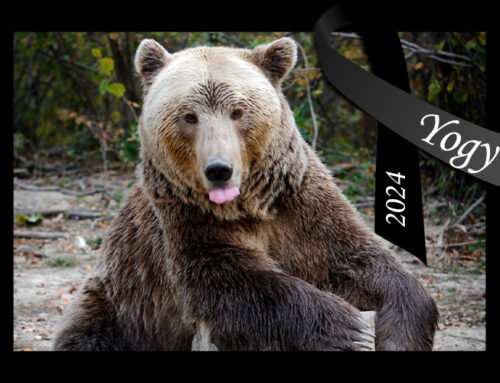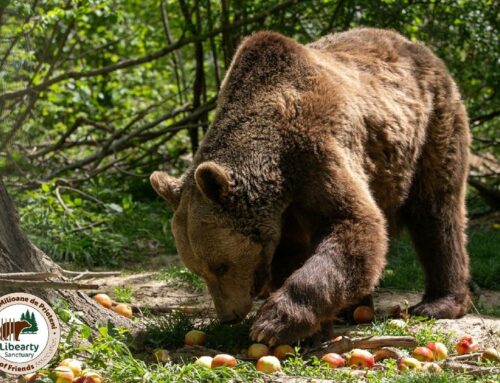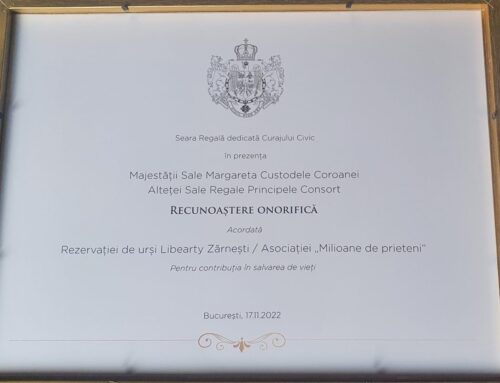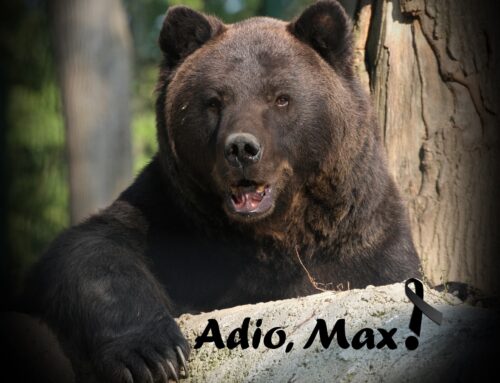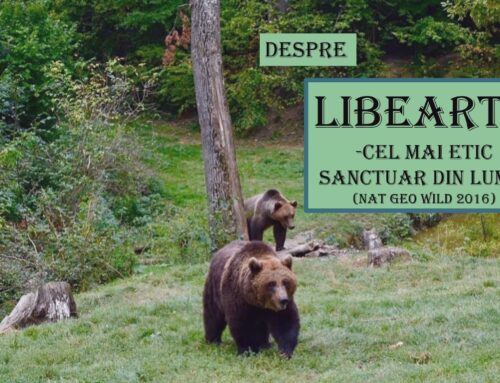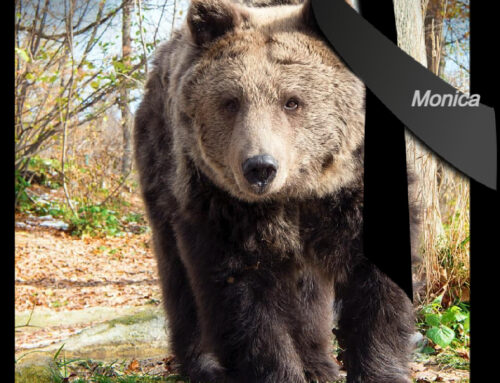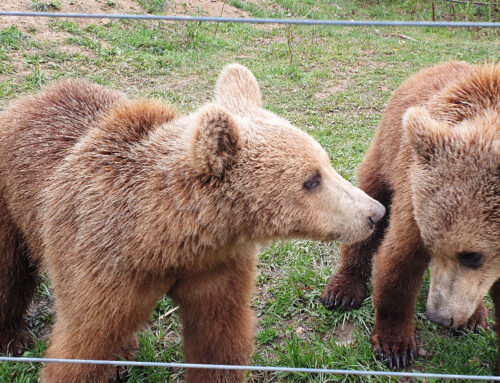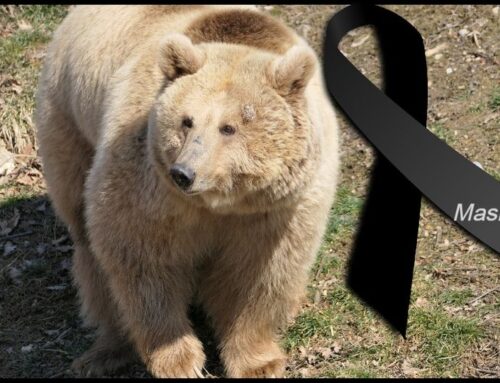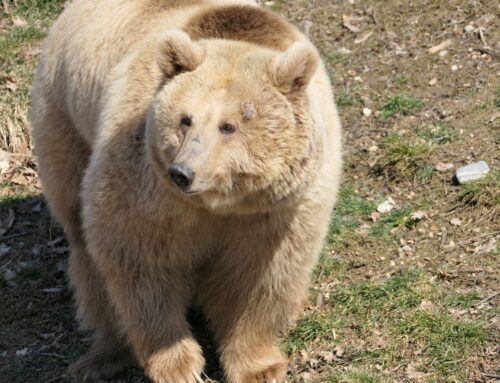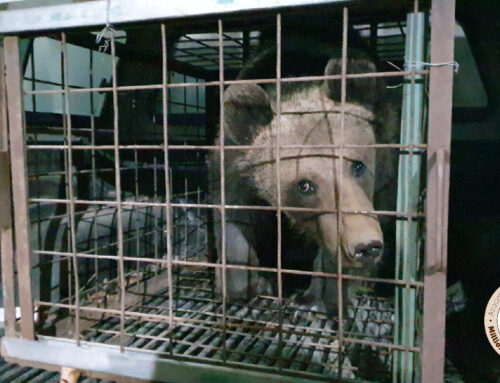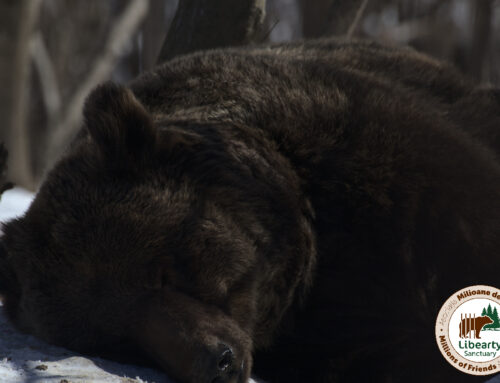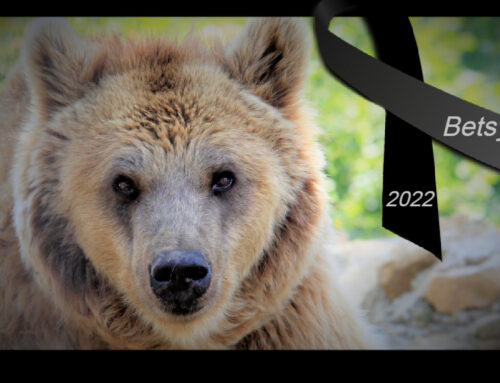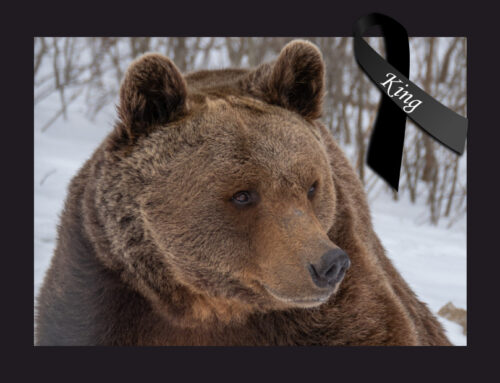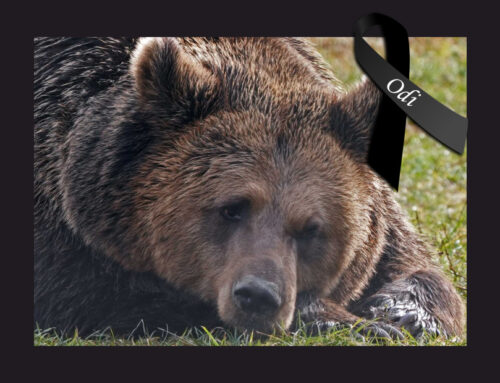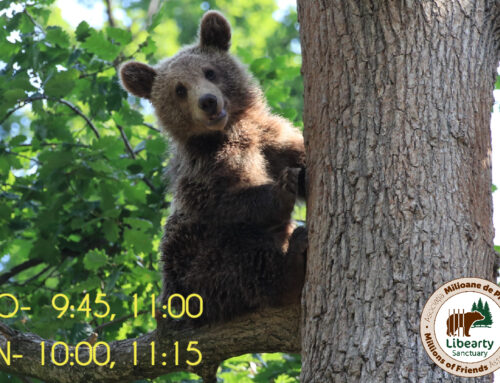

It’s easy to eat, but harder to clear the table. It’s true for people, but when it comes to bears, an idleness as big as they are enters into the equation after each feast. So ravens come into action, birds who moved into the oak forest of the sanctuary, creating a new ecosystem. Attracted to the tasty food found here in abundance, they nestle comfortably on the oak branches with acorns and fly down each time to clear “the plates.” They do it with such excessive zeal that sometimes they steal the food from the bears, which actually doesn’t at all bother the royals of the forest. Not only are the birds very intelligent, they’re unexpectedly strong as well. Each time we serve fish for breakfast, ravens can be seen grabbing an entire fish (over one kilo) and taking it over the fence, where they enjoy it quietly. The symbiosis between the ravens and the bears always amazes visitors to the sanctuary. Sometimes a bear who chews slowly can be surrounded by 10 to 20 ravens, rushing to clear the table.
“A passerby” 
Ravens don’t really go after people, but one gloomy day in October—gloomier than Edgar Allen Poe’s poems—a coal-black bird paid us a private visit. Impatiently waiting on a branch near the administrative building, our guest launched into a dive, made a wreath, and landed on the hood of the truck that carries food. The bird’s wingspan and size commanded respect. He skipped the food chain entirely and expected to be served directly by the sanctuary team. We obliged by feeding him a piece of meat by hand.
Did you know?
It’s known that these birds are as intelligent as apes, but there are other little-known behaviors that serve as examples for people. Ravens are the largest songbirds and the only ones able to use tools in search of food. They’re also the only ones that show subsidiary gratitude, feeding their parents when they are old. Although they can count to 30—if taught—ravens have just one life partner. Theirfidelity is so great that they don’t seek another partner unless theirs is killed or captured. Like brown bears, they’re omnivorous.–and contrary to myths, their life expectancy is similar to that of bears—20 years in the wild and 40 to 50 years in captivity.



